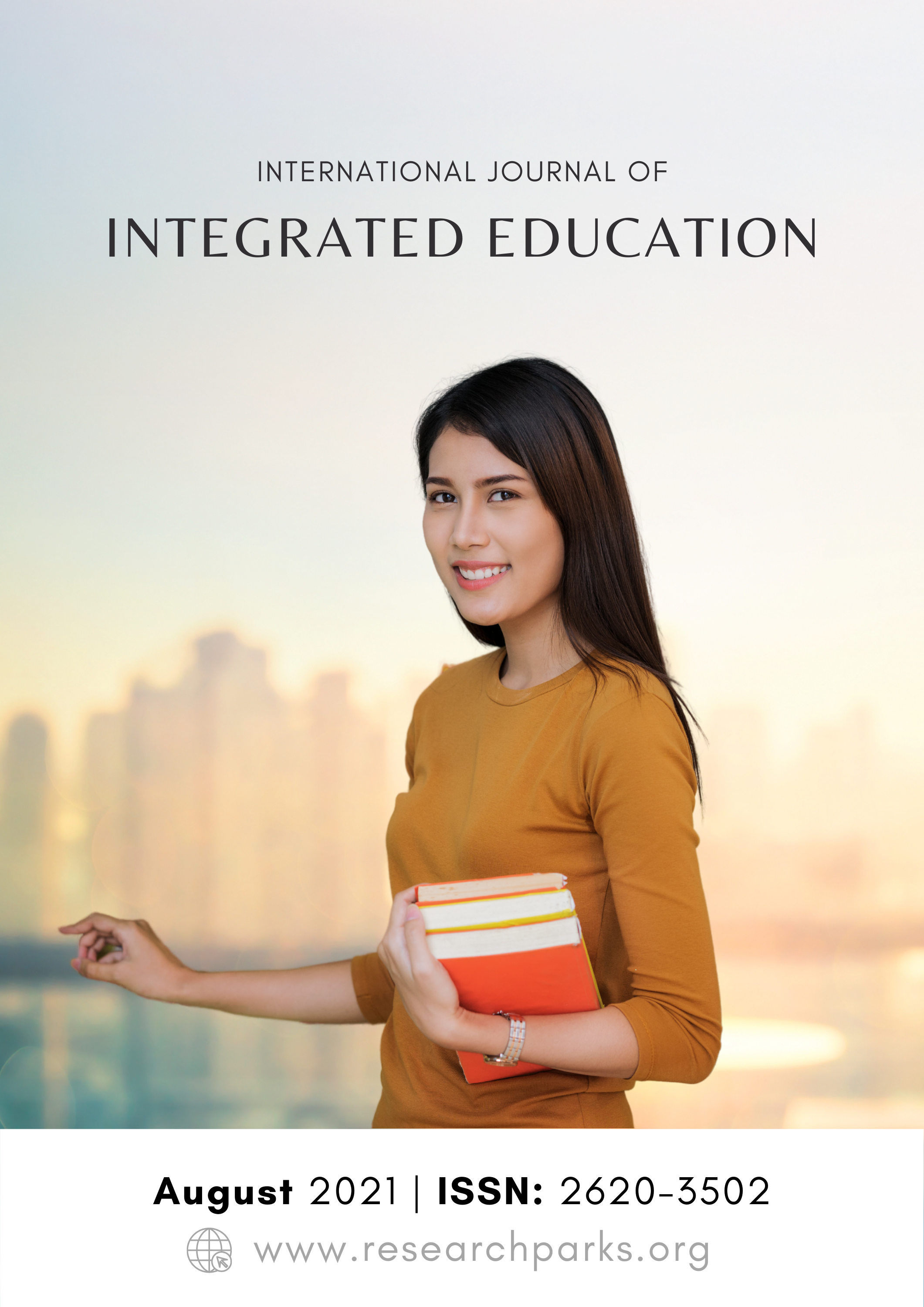Accommodative Value of Religious Moderation Based on Local Wisdom in Chairun Nisa's Universal Film
Abstract
Indonesia is a very diverse country in terms of ethnicity, language and religion. The diversity that exists in our country requires mutual respect and respect for the sake of realizing a society that is able to understand and accept differences in terms of culture, local wisdom and religion. Responding to the diversity that exists in Indonesia, we need to apply the value of religious moderation in social life. Students can listen to the value of accommodative religious moderation towards local culture and wisdom through film media. Film Semesta is a documentary film that explores climate change, religious moderation and local wisdom across Indonesia. This study uses qualitative research. The subject of this study is the value of religious moderation, which is accommodative towards local culture and wisdom in the film Semesta by Chairun Nissa. The object of this research was obtained from the film Semesta in the form of movie scene cuts, words, or sentences in the film which indicate the value of religious moderation. To analyze research data, researchers use analysis and interpretation based on the "onion research diagram" model which consists of four layers of values that are interrelated and influence each other. The four layers of values are symbols, heroes, rituals and values.. Based on the results of research in the Universe film, there are four layers of culture in the universe, namely symbols, heroes, rituals and values of the seven characters in the Universe film. In general, the values of accommodative religious moderation towards local culture and wisdom contained in the Semesta film are relevant to those in each of the character education values that can be integrated with Indonesian language lessons for class VIII MTs Plus Tarbiyah Tondano. The relevance of accommodative religious moderation values to local culture and wisdom in the film Semesta has points of intersection at four levels of Hofstede's onion theory, namely: Symbols, Heroes, Rituals and Values.
References
2. Huriani Yeni, Eni Zulaiha, Rika Dilawati. 2022. Pocket Book of Religious Moderation for Muslim Women. Bandung; Masters in Religious Studies at UIN Sunan Gunung Jati Bandung.
3. Jupri, Ahmad. 2019. Local Wisdom for Spring Conservation (Case Study in Lingsar Lombok Barat-NTB). Mataram; LPPM Unram Press.
4. Katuuk Kamajaya, Santje Iroth, Salmin Zakaria.Behavior Psychology Learning Management of Cultural Change Conflict based on the Media Film the Last Samurai.
5. Ngatno. 2015. Textbook of Business Research Methodology, Faculty of Social and Political Sciences. Semarang; Education Development and Quality Assurance Institute, Diponegoro University, Semarang.
6. Ningsih, Widya Lestari. 2020. Universal Synopsis of the Struggle of 7 Figures Against Climate Change. Accessed on 08 May 2023 at kompas.com
7. Riadi, Muchlisin. 2012. "Understanding, History, and Elements of Film." http:// www.kajianpustaka.com, accessed on 15 May 2023 .
8. Sadya, Sarnita. Map of Regional Languages in Indonesia, Which Province Has the Most. Accessed on 08 May 2023 at dataindonesia.id
9. Saifudin, Lukman Hakim. 2019. Religious Moderation, Jakarta; Research and Development and Training Agency of the Ministry of Religion of the Republic of Indonesia.
10. Suranto, 2016. Character Education Values Contained in "Mario Teguh Golden Ways". Faculty of Social Sciences, Yogyakarta State University email: [email protected] Abstract:
11. Writer team. 2012. Big Indonesian Dictionary. Jakarta ; Main Library Gramedia.
12. Tsuuri Sofyan. 2015. Opportunity Character Education in Building National Character. Jember; IAIN Jember Press
13. Yuliana, Cicin. 2023. Wow, it turns out that Indonesia has 718 regional languages. This is the list. Accessed on 08 May 2023 at detik.com
14. Zoebazary, Ilham. 2020. Dictionary of Television and Film Terms. Jakarta; Main Library Gramedia.
In submitting the manuscript to the International Journal on Integrated Education (IJIE), the authors certify that:
- They are authorized by their co-authors to enter into these arrangements.
- The work described has not been formally published before, except in the form of an abstract or as part of a published lecture, review, thesis, or overlay journal.
- That it is not under consideration for publication elsewhere,
- The publication has been approved by the author(s) and by responsible authorities – tacitly or explicitly – of the institutes where the work has been carried out.
- They secure the right to reproduce any material that has already been published or copyrighted elsewhere.
- They agree to the following license and copyright agreement.
License and Copyright Agreement
Authors who publish with International Journal on Integrated Education (IJIE) agree to the following terms:
Authors retain copyright and grant the International Journal on Integrated Education (IJIE) right of first publication with the work simultaneously licensed under Creative Commons Attribution License (CC BY 4.0) that allows others to share the work with an acknowledgment of the work's authorship and initial publication in this journal.






1.png)
